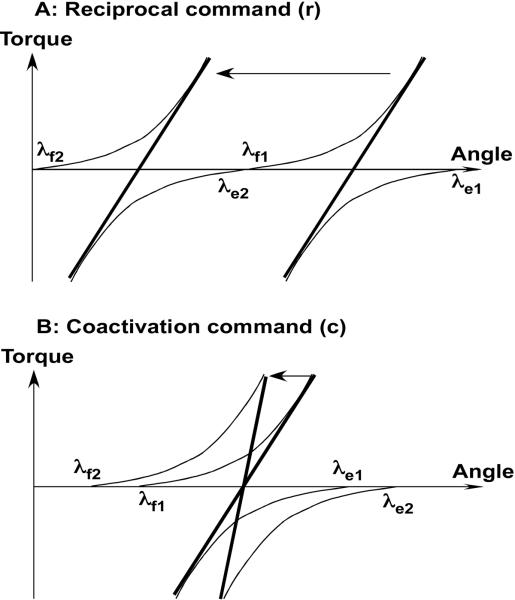Figure 2.
Control of a joint may be described with two variables, λf and λe on the torque-angle plane. The joint torque-angle haracteristic (thick lines) will represent the algebraic sum of the corresponding muscle characteristics. A: Shifts of both λf and λe in the same direction result in a shift of the joint characteristic parallel to the angle axis and may be associated with a reciprocal command (r). Shifts of λf and λe in opposite directions lead to a change in the slope of the joint characteristic and may be associated with a coactivation command (c).

